Hip Pain when Sitting? Do this!
Dec 24, 2023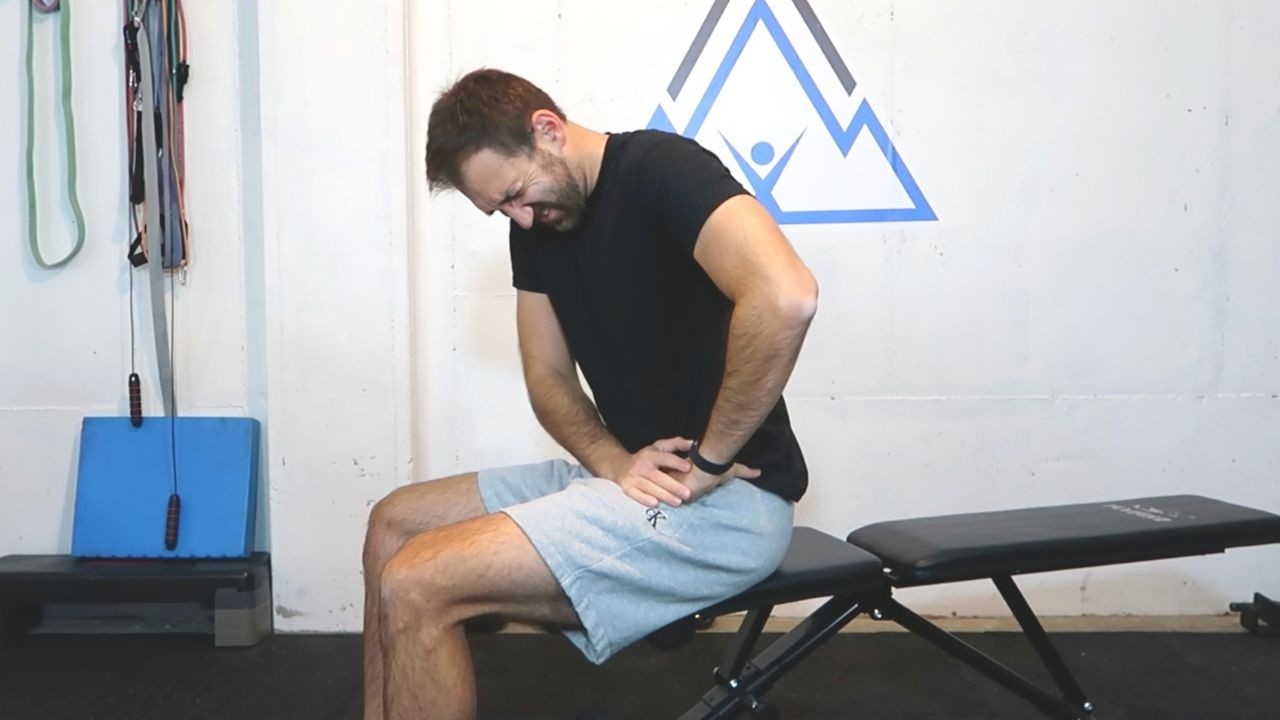
Another day sitting. Another day with annoying, chronic hip pain. You hear "sitting is the new smoking" so all this sitting must be why you're in constant hip pain.
But what are you supposed to do!? Sitting at the office is how you survive. It's how you pay the bills. You can't just go living like a caveman.
If sitting is the problem, maybe you've considered getting a standing desk. That will fix your hip pain right? Maybe. Using different positions when working is great BUT there is so much more you can do.
In this article, I will tell you what those things are. To feel better when sitting, you need to MOVE and THINK differently.
Below, I'll share a short exercise routine you can do to make sitting more comfortable for your hips. And I'll also share some mindful skills to implement when your hip pain starts creeping in.
But first, let's talk about what causes hip pain while sitting.
What causes Hip pain when Sitting?
Over a decade ago, I suffered from debilitating chronic hip pain. During this time, I was working myself through law school. And then eventually became an attorney.
Law school and law office work requires a lot of sitting. Like many of you, I went through a phase where I blamed sitting for my chronic hip pain.
And it's hard not to. Being sedentary for hour after hour and day after day is not good for our hips. And when we hear experts tell us how bad sitting is, it becomes obvious that too much sitting = chronic hip pain.
But I eventually realized something in my journey out of chronic hip pain. Sitting was bad, yes. But there was something even worse than sitting - physical inactivity.
The human body is meant to MOVE. When we don't move, muscles begin to weaken and atrophy. Tendons stiffen. Joints and ligaments don't get the nutrients they need to thrive. And pain develops.
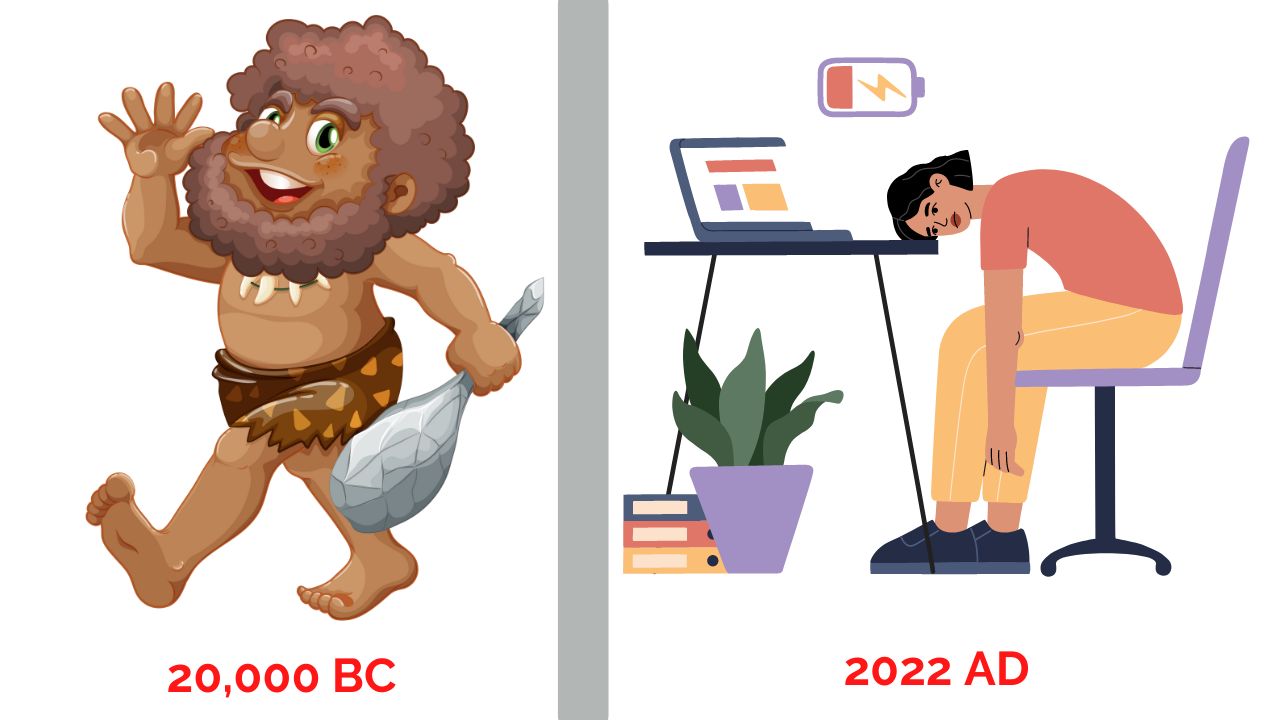
Once I prioritized more MOVEMENT throughout the day, sitting became more comfortable. I began to enjoy sitting and not fear it. And this brings us to the second cause for hip pain when sitting.
Many clients I work with are convinced sitting is behind their chronic hip pain. They give me the familiar shrug and say "I have an office job so you know, I sit A LOT. That's why I'm in hip pain."
An important concept in chronic pain education is that pain comes from the brain. A damaged hip joint does not tell your brain that there is a problem there. Instead, the brain, with all of the information that it has about your experience, sends a pain signal into your awareness.
What creates this pain signal? Many things. One very important contributor is our perception and belief system. If we believe a certain activity or movement will cause pain then it is more likely to do so. Source 1.
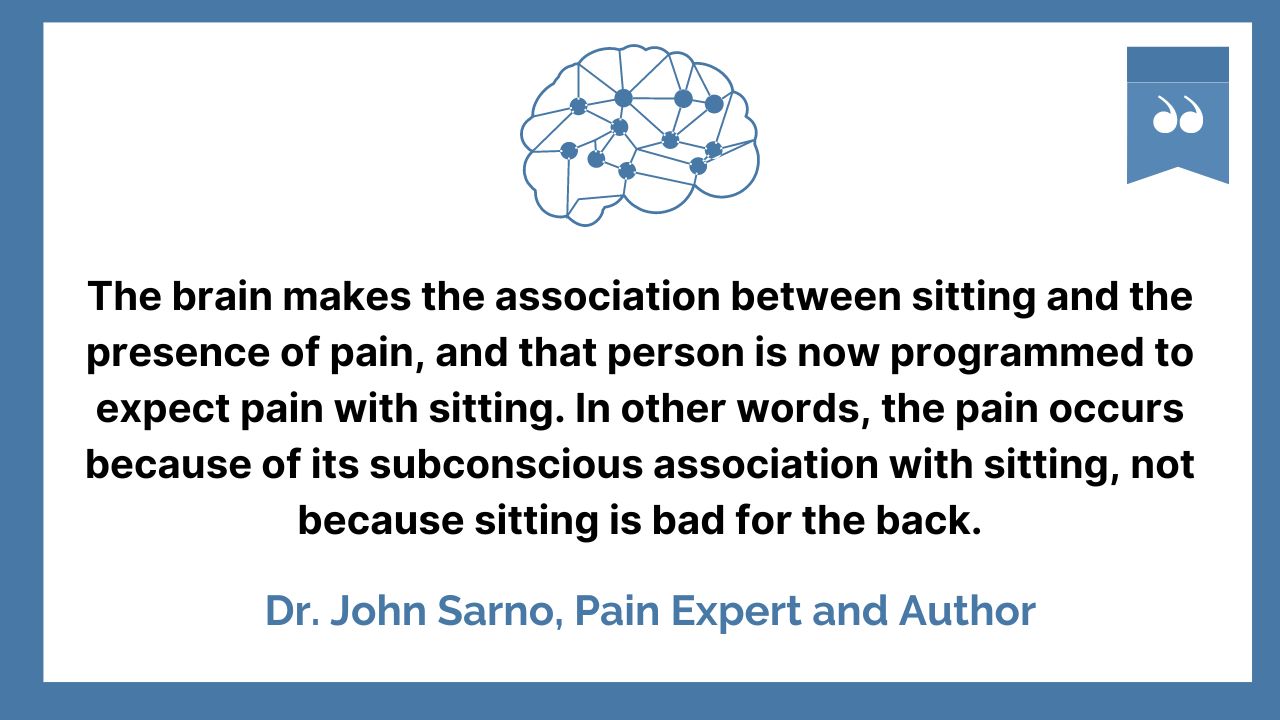
There are physical and psychological factors that affect our pain patterns. After working through my own chronic hip pain and now helping hundreds of people do the same every year, I've came to my own belief of what causes hip pain.
Hip pain is a result of how we interact with our environment. This interaction includes our bodies and our minds. This is true if we experience hip pain when sitting, standing or riding horses. How we think and how we move affects how we experience reality.
Now that we have a general idea of what causes hip pain, what do we do about it?
How to Reduce Pain Hip when Sitting
In the above section, we learned that hip pain, whether sitting or otherwise, is caused by physical and psychological factors. This means that addressing hip pain requires a strategy that integrates both of these factors.
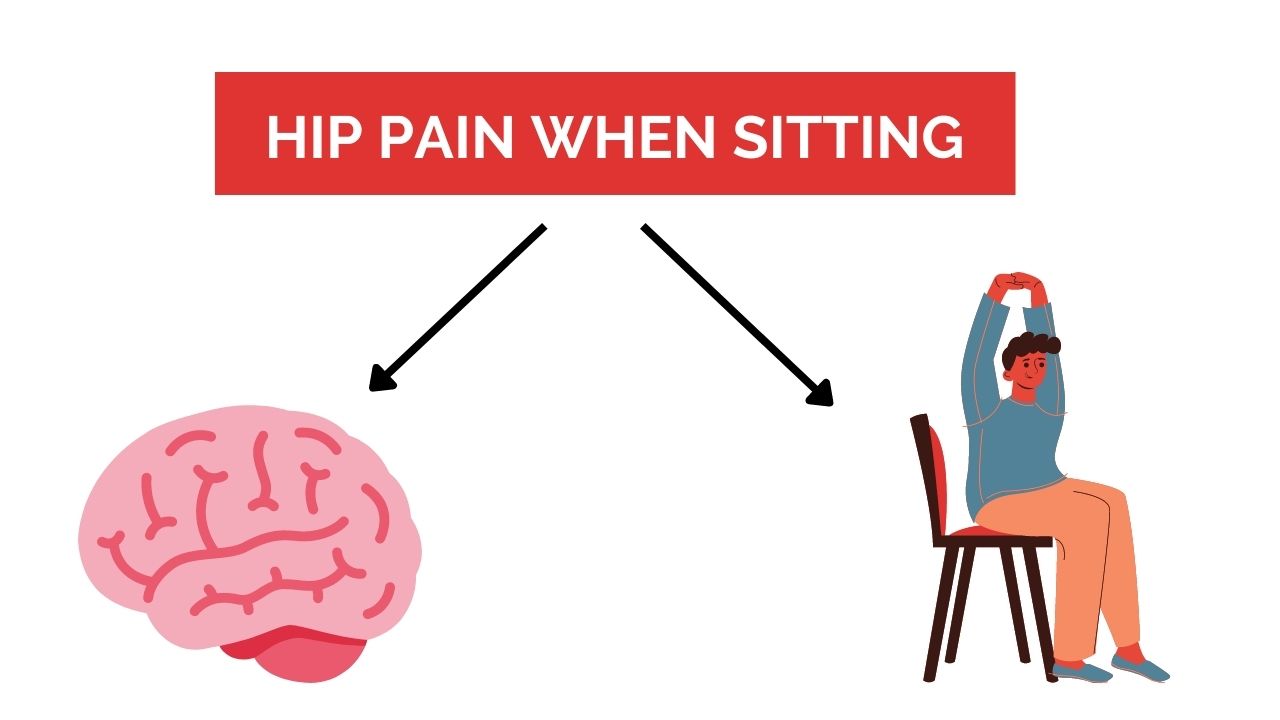
Let's talk about the physical first. We learned that it is not so much sitting that causes hip pain but a lack of physical activity. To feel better, we need to feed our body with movement. But not just any movement.
There is a misconception that because there is pain in the hip, the problem is in the hip. And even more specifically, the problem is exactly where the pain is.
For example, say someone suffers from pain in the side of the hip. There is potential for two misjudgments here. First, that there is something wrong with the hip joint. And second, that some structure (muscle or tendon) on the side of the hip is responsible for the pain.
More likely however, there is imbalance elsewhere in the body that is causing the pain. For example, maybe the opposite hip is not strong enough to keep the body upright. Or maybe the pelvis is rotated because the muscles around the ribs and shoulders are dysfunctional.
There are MANY ways the body can be out of balance. Although we might be tempted to just focus on the area that hurts, this type of isolated approach rarely works. And in fact, can make pain symptoms even worse because we are aggravating an already irritated area.
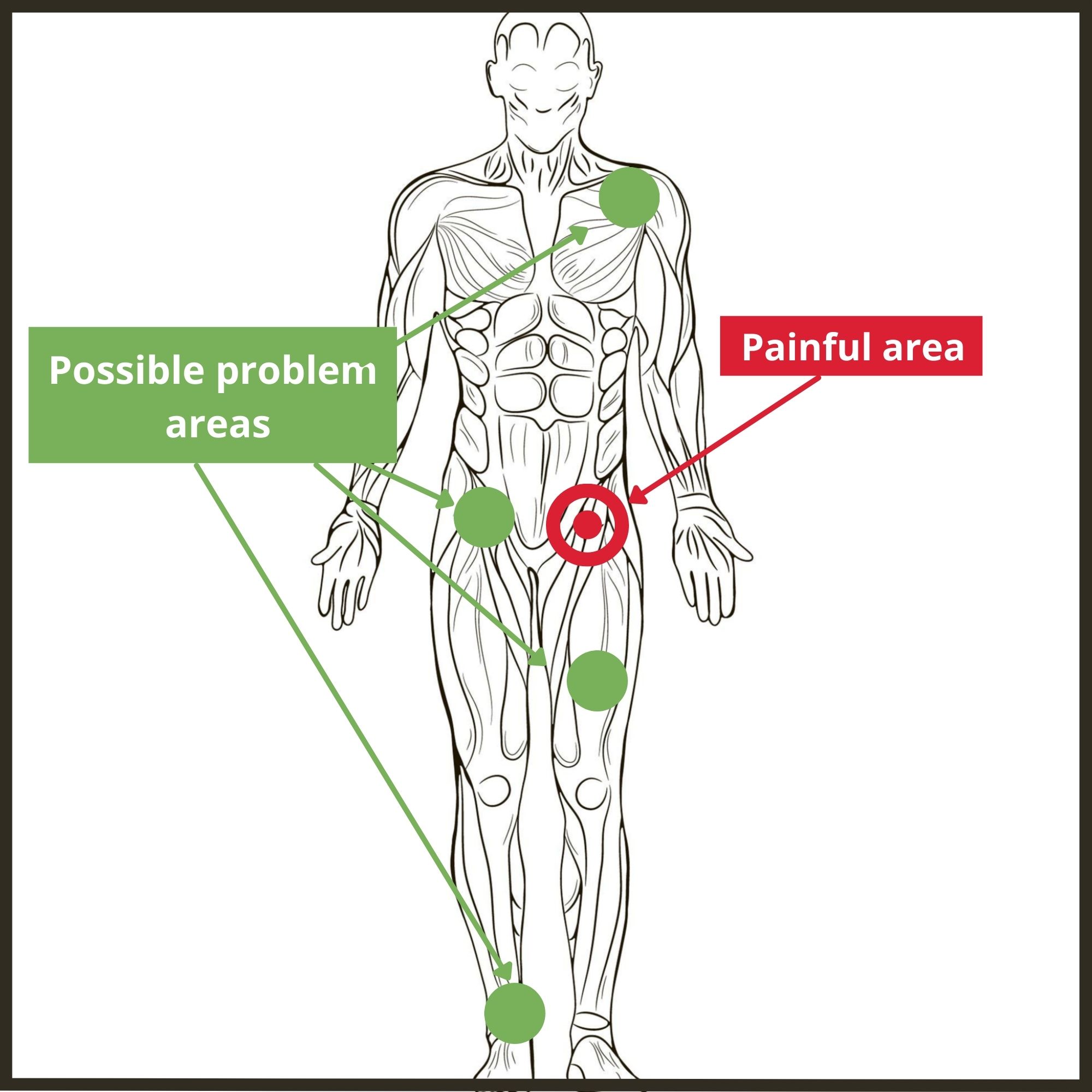
So we need a routine that brings the entire body back into balance. I am going to share 3 exercises with you that rebalance the entire body. These exercises are from my Happy Hips course where I teach students how to get out of chronic hip pain through movement and pain education.
Try doing these exercises before and after your next long bout of sitting.
Once we start building function back to the entire body, we also need to address the psychological element. As we learned in the previous section, expecting pain from sitting is a risk factor for experiencing hip pain in sitting.
For some people, just becoming educated on this concept makes a HUGE difference in their symptoms. But for others, a more systematic approach is necessary. Here is a strategy from my Happy Hips course.
Notice when the hip pain shows up during sitting. What beliefs, thoughts or emotions also come up when this pain signal shows up? NAME them. For example, if a thought pops up about how you need to stretch your hip flexor, simply note "thought, thought."
Or if you start getting worried that your hip pain will never go away, simply note "worry, worry." This is mindfulness. Simply becoming aware of what is happening inside of our minds and bodies. And when we start paying attention, we may notice that there is more to our pain patten than just pain.
 There are emotions, false beliefs and stories that we tell ourselves about our pain. Naming these experiences and becoming familiar with them is the first step in detaching yourself from unhealthy pain patterns.
There are emotions, false beliefs and stories that we tell ourselves about our pain. Naming these experiences and becoming familiar with them is the first step in detaching yourself from unhealthy pain patterns.
You now have a great place to start. Before I end this article, I wanted to talk about a specific situation that I get a lot of questions about. Getting up from the seated position.
Want to get new exercises in your inbox every week? Sign up for my movement journal below to help you build healthier hips and a more consistent movement practice.
Hip Pain when Standing up from Sitting Position
I acknowledge that the advice I provide above is relatively general. Full body function, OK. Being. more mindful, OK. But what about your specific situation? What about the activities that aggravate YOUR hip.
Every single person in hip pain has a unique experience. Where it hurts. How it hurts. And which activities seem to trigger pain symptoms.
Like getting hip pain when standing up from sitting. This is different than getting hip pain when sitting. So this means a different therapeutic approach is needed, right?
Not quite. Many of us have a framework of how pain should be treated. I believe this framework comes from what we've learned in modern medicine.
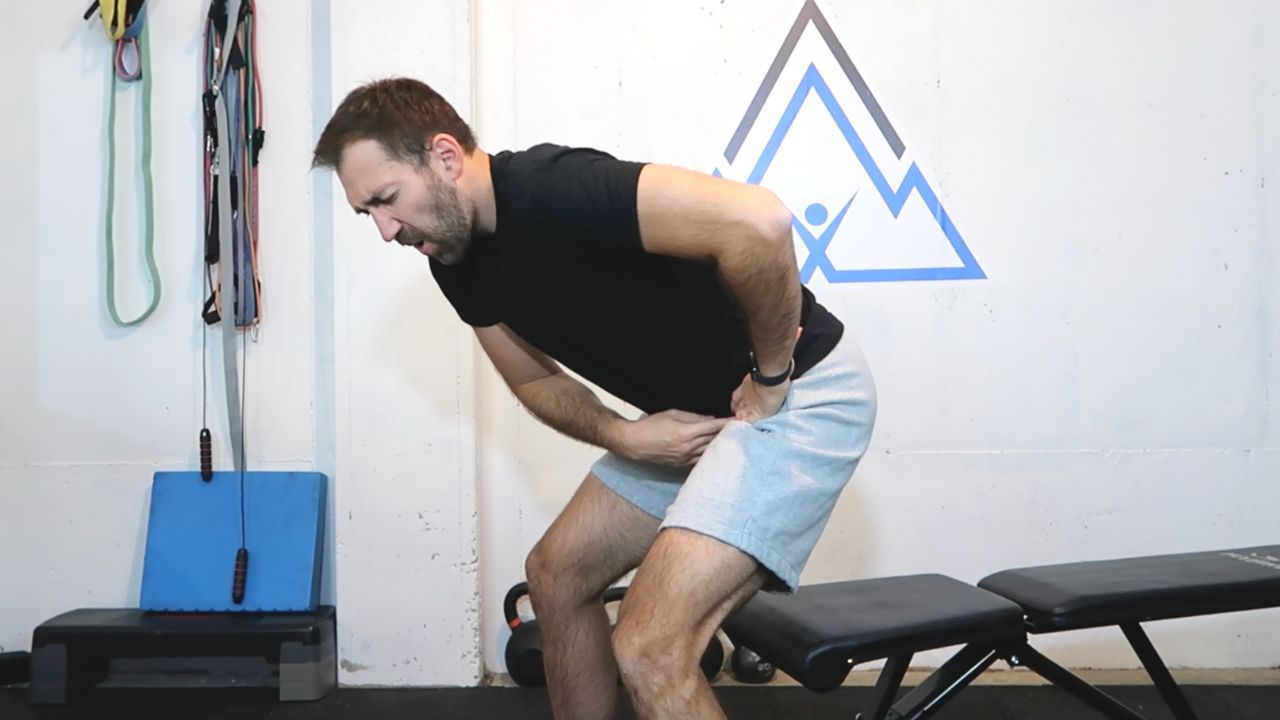
For example, if you have a sore throat, a doctor will determine what is causing it. She will look at your symptoms and do some physical tests. She will also take a sample of the microbes in your throat.
If there is strep bacteria, then you are diagnosed with strep throat. Take some medicine and BAM, back to normal!
But this is an acute infection. It is very different from chronic pain. But our framework does not change. We believe that our unique symptoms mean we have a specific type of diagnosis.
And MRI or X-ray images do not do a good job of telling us why we are in chronic hip pain. I write about this phenomenon in many other articles. Like here, here and here.
Chronic hip pain sufferers believe that they need a unique approach to healing based on when, how and where they get pain. 
Chasing symptoms is never a sound strategy. Trust me. I've done this too much for myself and others when I first started working in this field. It never works!
The way out of chronic hip pain is to build back full-body function. It is to build a healthier and more mindful relationship with your pain patterns. This is true if you get pain when sitting, standing up from sitting, or riding horses.
Closing Thoughts on Hip Pain when Sitting
If you were looking for a quick "fix" for hip pain and sitting, you might be disappointed with this article. Hey, if there was an easier way, then I would do it too!
The only way to know the "quick fix" method does not work is to try it for yourself. But eventually, one needs to understand that chronic hip pain needs a well-rounded approach for long-term healing.
In my journey, there were so many times when one of my mentors said something that I did not like. It usually required me to look inward more. To challenge some strongly-held beliefs that I had about my hip pain and health in general.
I ignored this wisdom at first and went about my life. Eventually I realized they were on to something. Maybe they weren't exactly right. But I realized that my inability to entertain their advice was a sign that I'm closing off some area of growth.
Maybe it was because of the way I was raised. Or the way my brain works. Or some societal notion that was ingrained in me. But I now look for these moments intentionally. When am I pushing something away because I think I know better?
When do I get angry about an idea just from hearing it? When do I get worried that if something is true, it changes everything I know?
I create content to make it thought provoking. For you to question how you think about your chronic hip pain. I ask that you let the words in this article sit with you and see what arises for you.


